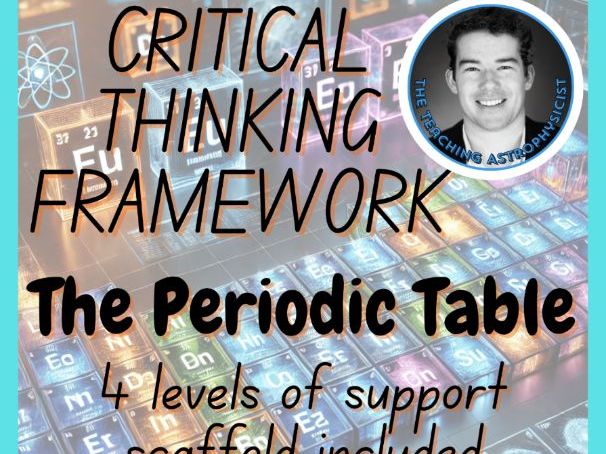

Using a structured critical thinking framework encourages deeper engagement with chemistry concepts and helps students make stronger connections across the periodic table. By breaking down scientific inquiries on the periodic table into clear, manageable steps, teachers can guide learners to analyze evidence, question assumptions, and articulate their thought processes. This approach fosters inquiry-based learning, addresses misconceptions more effectively, and prepares students to handle complex, real-world problems. Additionally, it promotes collaboration, allowing students to share diverse perspectives and refine each other’s reasoning. Overall, this periodic table critical thinking framework supports a more active and reflective learning environment, leading to improved understanding and long-term retention of key chemistry principles. After all, we can not and should not leave all the thinking to the chatbots! With this in mind, let’s engage with this excellent learning and teaching resource.
A critical thinking framework focused on the periodic table brings this complex phenomena into clear, student-friendly steps. By guiding learners to identify questions, evaluate evidence, and compare multiple explanations, it transforms the study of the phenomenon of the periodic table into an engaging, inquiry-based experience. Students gain a deeper appreciation for science as they piece together how the periodic table is relevant in the real world. Rather than just memorizing facts, they actively practice scientific habits of mind - analyzing data, identifying gaps in knowledge, and reflecting on the learning process.
A dedicated framework also saves time and supports more robust learning outcomes. It provides a structured path for teachers to implement discussions, projects, or small-group investigations without having to create all the resources from scratch. Embedded prompts and example strategies help students build confidence in their ability to think like scientists, meaning you can focus on facilitating exploration rather than constantly reinventing lesson plans. Ultimately, investing in this streamlined approach helps elevate student engagement, fosters critical thinking skills, and brings the world of the periodic table in real life to students in the classroom.
Something went wrong, please try again later.
This resource hasn't been reviewed yet
To ensure quality for our reviews, only customers who have purchased this resource can review it
to let us know if it violates our terms and conditions.
Our customer service team will review your report and will be in touch.